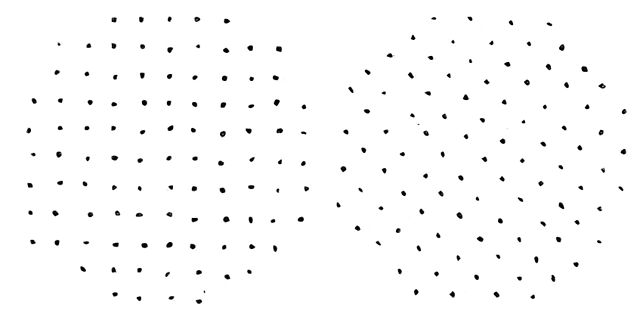
Imaginary distinctions are often drawn between beliefs which differ only in their mode of expression;– the wrangling which ensues is real enough, however. To believe that any objects are arranged as in Fig. 1, and to believe that they are arranged as in Fig. 2, are one and the same belief; yet it is conceivable that a man should assert one proposition and deny the other. Such false distinctions do as much harm as the confusion of beliefs really different, and are among the pitfalls of which we ought constantly to beware, especially when we are upon metaphysical ground. One singular deception of this sort, which often occurs, is to mistake the sensation produced by our own unclearness of thought for a character of the object we are thinking. Instead of perceiving that the obscurity is purely subjective, we fancy that we contemplate a quality of the object which is essentially mysterious; and if our conception be afterward presented to us in a clear form we do not recognize it as the same, owing to the absence of the feeling of unintelligibility. So long as this deception lasts, it obviously puts an impassable barrier in the way of perspicuous thinking; so that it equally interests the opponents of rational thought to perpetuate it, and its adherents to guard against it.
— Charles Sanders Peirce, “Illustrations of the Logic of Science: How to Make Our Ideas Clear,” Popular Science Monthly, January 1878
